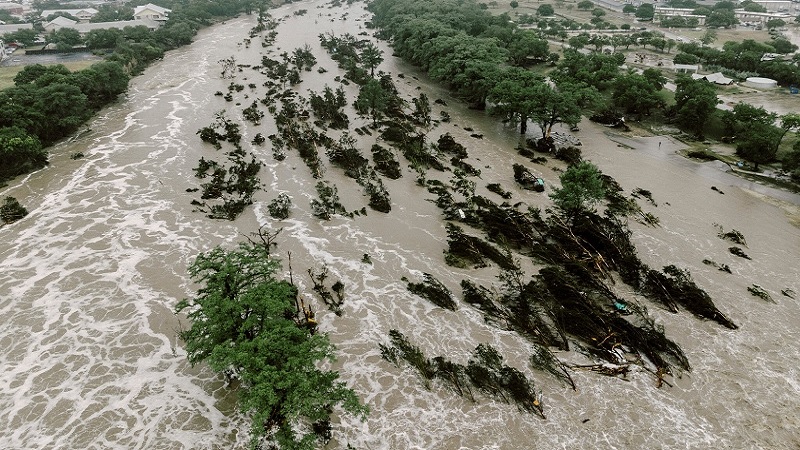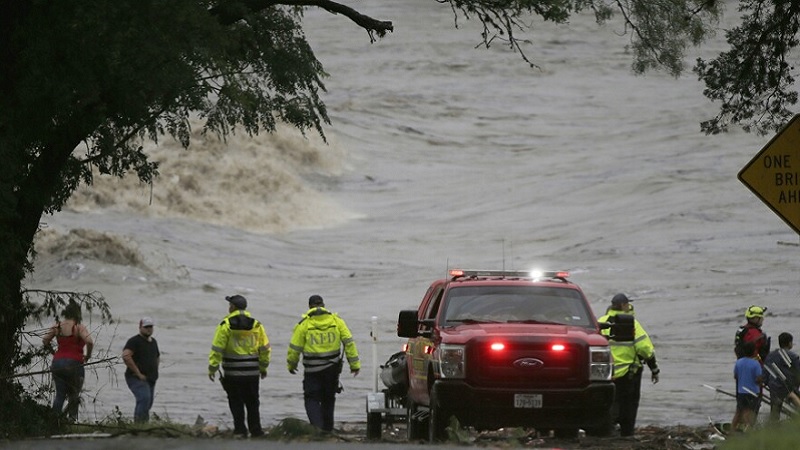Over 50 Dead in Texas Flash Floods as Search Continues for Missing Campers

Published : 16:47, 6 July 2025
Severe flash flooding in central Texas has resulted in at least 50 confirmed fatalities, including 15 children, following unprecedented rainfall that caused rivers to rise rapidly and without warning.
The flooding, which occurred primarily in Kerr County, has left dozens more individuals missing and prompted one of the largest search-and-rescue operations in recent state history.
Among those unaccounted for are 27 girls from Camp Mystic, a Christian summer camp located along the Guadalupe River. The river rose approximately 26 feet (8 meters) within 45 minutes during the early hours of July 4, sweeping away parts of the camp and surrounding areas. Nearly 750 girls were attending the camp during the Independence Day weekend.

Authorities report that more than 1,700 personnel have been involved in the emergency response, with over 850 people rescued. Recovery efforts remain ongoing amid persistent rainfall and new flash flood warnings. Officials acknowledge that while some missing persons may have found temporary refuge, the probability of survival diminishes with each passing hour.
The National Weather Service (NWS) had issued a flood watch more than 12 hours prior to the disaster, followed by flash flood warnings in the affected regions. Despite these alerts, local officials have stated that no localized emergency warning system was in place for Kerr County, limiting the ability of residents to respond in time.
A river gauge near Camp Mystic recorded a 22-foot (6.7-meter) rise in under two hours before failing at a peak level of 29.5 feet (9 meters). The intensity and speed of the flood have raised questions about the region’s preparedness and the broader implications of climate-related extreme weather.
Meteorological data indicates a 20% increase in the frequency of heavy precipitation events in eastern Texas since 1900. Projections suggest an additional 10% rise in rainfall intensity over the next decade, as warming atmospheric conditions allow for greater moisture retention and more intense storms.

The area impacted by the flooding lies within a region known as "flash flood alley," characterized by shallow soils and rapid runoff. These geological features, combined with steep terrain, contribute to the area's vulnerability during periods of intense rainfall.
The disaster has prompted renewed debate over federal resource allocation and the forecasting capacity of national weather services. While some officials attributed the event to forecasting limitations, meteorologists maintain that accurate warnings were issued in advance of the flood.
Rescue efforts continue, with search teams employing helicopters, drones, and watercraft to reach remote or inaccessible areas. A significant number of fatalities remain unidentified, including both adults and children.
The Texas state government, in coordination with federal agencies, has pledged continued support for the ongoing rescue and recovery operations. The long-term recovery is expected to require extensive coordination and humanitarian assistance, particularly for communities that experienced complete infrastructural loss.
Source: AP news, BBC News, The Guardian, Reuters, The Washington Post
BD/O











